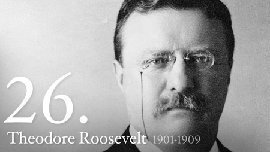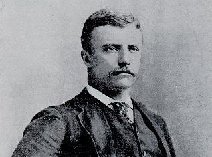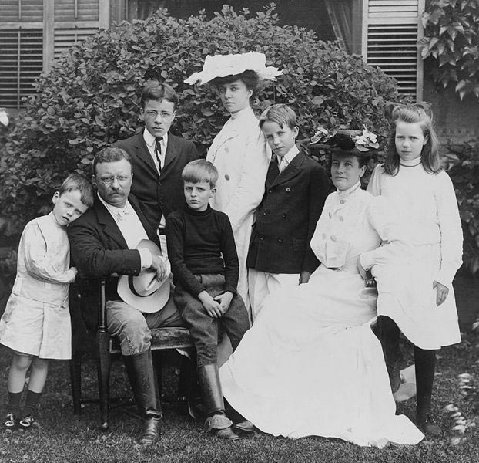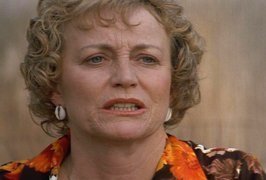Good 35º super dark and foggy morning.
10-27 .. LASD radio code for "any return on number or subject?"
Yesterday, again we started foggy....
Later the clouds moved in............
We had a little rain.
We topped at 56º
Picture of the Day

Interesting about police uniforms.....
Police uniforms in the United States vary widely due to the nation's tradition of highly decentralized law enforcement. Over time, however, a number of general conventions and styles have become representative of American police fashion. Police officers wear uniforms to deter crime by establishing a visible presence while on patrol, to make themselves easily identifiable to non-police officers or to their colleagues who require assistance, and to quickly identify each other at crime scenes for ease of coordination.
Centralized, municipally-managed police departments were unknown in the United States prior to the 1830s. Early law enforcement functions were largely performed by volunteer watchmen as well as elected or appointed constables and sheriffs, who were paid by the fee system for warrants they served. The advent of professional police forces in the United States foreshadowed the introduction of standardized police uniforms. While uniforms for police had been introduced in the United Kingdom as early as 1828, adoption of standardized dress in the United States took longer, with many of the new police objecting to uniforms out of concern they would be subject to public ridicule. Nonetheless, in 1854, the New York City Police Department became the United States' first municipal police force to issue uniforms to its officers. New York City was followed, in 1858, by Boston, Chicago, and soon thereafter, other cities.
NYPD 1899:
The navy blue uniforms adopted by many police departments in this early period were simply surplus United States Army uniforms from the Civil War. Head-wear typically took the form of stovepipe hats, a starched woolen head cover similar in appearance to a top hat but with a squatter dimension, or British-style custodian helmets. In rural areas, where preventative policing was limited or non-existent, sheriff's deputies continued to wear civilian attire, using only their badge as a mark of identification. In many states this practice continued well into the following century. The Orange County, California sheriff's office, for instance, did not adopt a uniform until 1938.
By the early 20th century, the style and form of American police uniforms had essentially settled into its modern pattern of collared shirts, neckties, slacks and military-style jackets with open collars, all worn with peaked hats. Many early uniforms had loose-fitting jackets that would conceal a police officer's equipment, such as truncheon and sidearm. Beginning in the 1930s, officers more frequently began wearing their personal gear on a Sam Browne belt worn outside the coat, for ease of access.
Seattle PD 1920's...
To read a lot more about police uniforms, go here:
I used to make these all the time....
Marinated Mushrooms
2 parts oil (salad oil, or 1/2 salad oil and 1/2 olive oil.. I use all olive oil)
1 part lemon juice
1 clove garlic, crushed
salt
ground pepper
Worcestershire sauce
basil
oregano
chopped parsley
mushrooms
Dry mushrooms thoroughly. If brown, soak in mixture of one part lemon juice to three parts water to bleach.
Mix oil, lemon juice, crushed garlic in a bowl. Add mushrooms. Sprinkle lightly with salt and pepper. Sprinkle with Worcestershire sauce. Add several pinches of basil, oregano, and chopped parsley.
Let marinate at least two hours in refrigerator or one hour out. Stir while marinating.
Historically this date........
1936 – Mrs Wallis Simpson files for divorce which would eventually allow her to marry King Edward VIII of the United Kingdom, thus forcing his abdication from the throne.
1961 – NASA launches the first Saturn I rocket in Mission Saturn-Apollo 1.
1962 – Major Rudolf Anderson of the United States Air Force becomes the only direct human casualty of the Cuban Missile Crisis when his U-2 reconnaissance airplane is shot down in Cuba by a Soviet-supplied SA-2 Guideline surface-to-air missile.
1988 – Ronald Reagan decides to tear down the new U.S. Embassy in Moscow because of Soviet listening devices in the building structure.
2004 – The Boston Red Sox win the World Series for the first time in 86 years.
And births this date include...
1858 – Theodore Roosevelt, 26th President of the United States, recipient of the Nobel Peace Prize (d. 1919)

1920 – Nanette Fabray, American actress (d.2018)
1939 – John Cleese, British actor and writer
1940 – John Gotti, American crime boss (d. 2002)
1946 – Carrie Snodgress, American actress (d. 2004)
All I know. Nuff said. Have a good Thursday. Ciao.
xo Sue Mom Bobo
Navy Day on October 27th salutes all of the military personnel who have served, both past and present, in the United States Navy.
The United States Navy (USN) is the naval warfare service branch of the United States Armed Forces. It’s also one of the seven uniformed services of the United States. The U.S. Navy currently stands as the largest, most powerful navy in the world, with the highest combined battle fleet tonnage. The service engages over 340,000 personnel on active duty and more than 71,000 in the Navy Reserve.
Navy History
Throughout the Revolutionary War, their importance grew. Today, the United States maintains 40 naval bases across the country, including the world’s largest Naval Station Norfolk, in Norfolk, Virginia.
Below the sea, submarines became a part of the Navy during World War II. While experiments began in the late 1800s and during the Civil War, they did not become a large part of the Navy inventory until World War II. At that point, subs became necessary for surveillance and rescue, even though they were also armed.
With the advent of the airplane, the Navy became vital stations for the Air Force as well. As a result, the Navy modified ships into floating landing strips. Today, joint Naval and Airbases such as Pearl Harbor-Hickam provided necessary fleets of the sea and air defense.
Theodore Roosevelt and the Navy
Between 1922 and 1972, the Navy celebrated its birthday on October 27th in honor of President Theodore Roosevelt’s birth. He elevated the U.S. Navy to a premier fighting force. During his term as Assistant Secretary of the Navy, he built up the power and strength of the U.S. Navy. Roosevelt’s pursuit of the naval aircraft advanced the U.S. Navy. As president, Roosevelt was the first president to submerge in a submarine and also the first to fly. His support of the Navy led the former Secretary of the Navy, John F. Lehman, to say, Theodore Roosevelt, “was one of the architects of our modern Navy.”
NATIONAL NAVY DAY HISTORY
The Navy League of the United States organized the first Navy Day in 1922. They chose October 27th honoring the birth of President Theodore Roosevelt.
and...........
National American Beer Day raises a glass to the rich American beer making history and those who savor the continued traditions. Pour your favorite pint with millions who enjoy the storied brews across the nation.
U.S. Brewing History
Brewing beer in America begins long before Europeans arrived since Native Americans brewed beer from a variety of ingredients. They used corn, birch sap, and water to ferment their beverage. Then when the first colonists arrived in Virginia, they began combining their brewing traditions with the supplies at hand – that included corn, too. Since then, brewing and brewers became a principal occupation in the colonies. Interestingly, the first white child born in Manhattan grew up to be the first brewer born in America.
Today, the brewery established by David G. Yuengling is the oldest producing brewery in the United States. He established the Eagle Brewery in 1929. Amazingly, the brewery still remains in the family to this day.
Unlike most other breweries of the time, the Eagle Brewery survived Prohibition. In fact, very few survived. Those that did survive tried various legal and illegal tactics. In the Eagle Brewery’s case, they reduced their alcohol content to within the legal limit. They also branched out. Ice cream anyone? Yes, the Yuengling’s started a dairy. Others turned their beer making supplies into other products. When prohibition lifted, they returned to full-fledged beer making.
Despite these efforts, nearly every brewer existing before prohibition dissolved. Out of just over 1,300 brewers, only about 100 remained after prohibition. Today, we recognize the names of many of those surviving breweries.
The skill of a brewer requires years of practice in the trade. It’s revered even. In Milwaukee, their professional baseball team is named after the brewer. In St. Louis and Denver, the stadiums are named after prominent brewers.
More than 2,100 breweries are manufacturing beer in the United States. They range in size from industry giants to brewpubs and microbreweries.
American Beer Facts
- The U.S. produced 196 million barrels of beer in 2009.
- Americans consume roughly 20 US gallons of beer per capita annually.
- In 2008, the United States ranked sixteenth in the world in per capita consumption. However, total consumption was second only to China.
- After Congress repealed prohibition, the industry consolidated into a small number of large-scale breweries.
- The majority of the new breweries in the U.S. are small breweries and brewpubs. As members of the Brewers Association, they are termed “craft breweries” to differentiate them from the larger and older breweries.
- Larger breweries most commonly produce the American lager.
- However, smaller breweries (many founded in the 1980s) produce a range of styles.
- Beer styles originating in the United States include:
- American pale ale
- Pennsylvania porter
- American IPA
- steam beer
- amber ale
- cream ale
- Cascadian dark ale
and............
Don’t be superstitious on National Black Cat Day! October 27th celebrates the beauty of these sleek creatures. The day also seeks to raise awareness about the low adoption rates for black cats.
This time of year, many black cats may decorate many thresholds for Halloween and windows for spooky decor. However, these felines deserve the love and attention just as much as their tabby equivalents. Old notions have given these furry critters a bad reputation. The day is about turning that reputation around.
Their black canine counterparts also face similar adoption problems. So, it’s not all about myth and mystery. However, increasing support for the black feline’s plight is the goal of this companion holiday.
NATIONAL BLACK CAT DAY HISTORY
Cats Protection, an animal charity in the United Kingdom, founded National Black Cat Day to raise awareness concerning the lower rates of adoption for black cats.




















